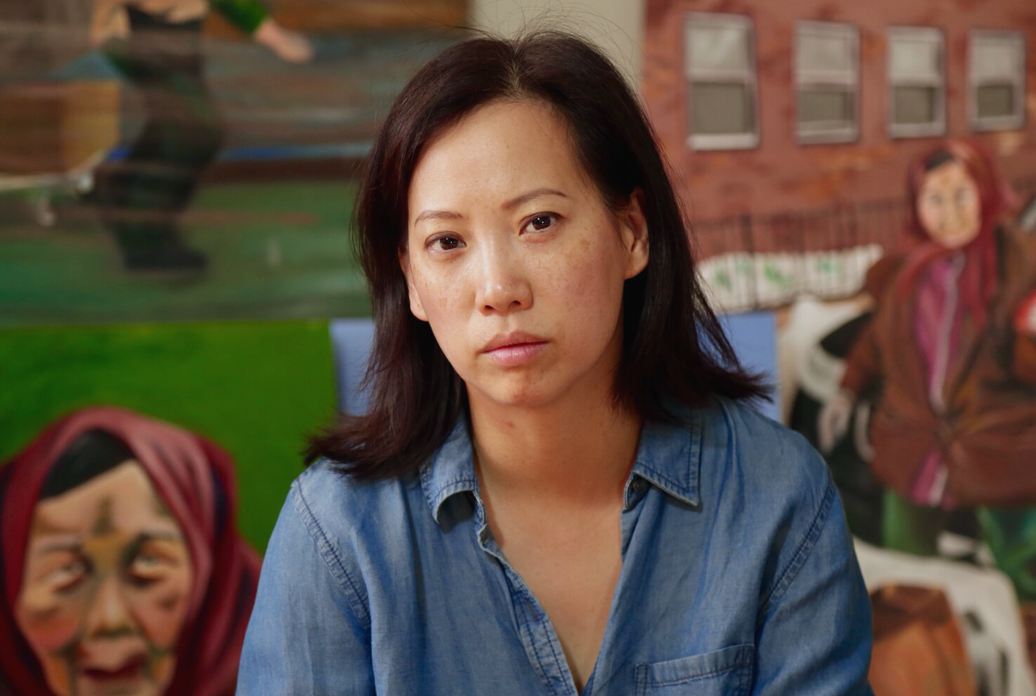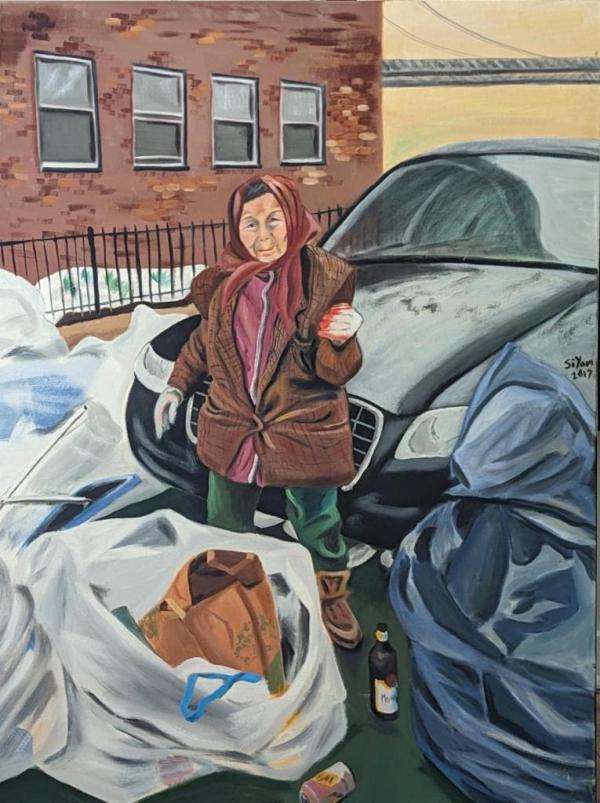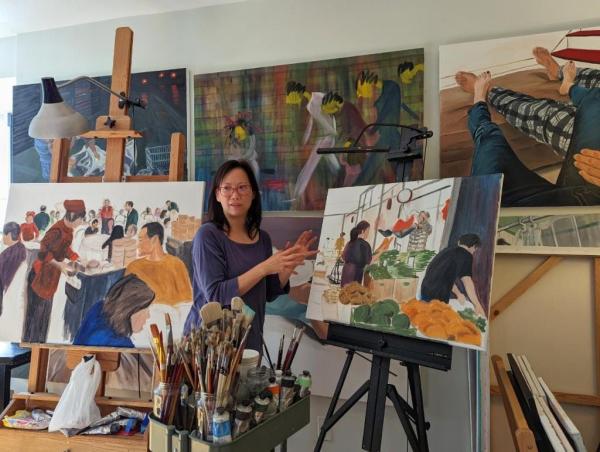KID REPORTERS’ NOTEBOOK
Making Visible the Invisible


Visual artist Siyan Wong, who lives in New York City, was born in China.
Many people want to look away from injustice and other troubling issues. Visual artist Siyan Wong has chosen not to look away. Through her art, she helps us see what is right before our eyes.
Wong, who lives in New York City, was born in China. Her art focuses on women, the elderly, people who are experiencing homelessness, garment industry workers, and victims of hate crimes against Asian Americans.
Wong has loved art since she was a child. Her family didn’t have much money, so she and her sister would cut out and draw paper dolls to play with. This early experience provided Wong with a creative outlet for her emotions. After graduating from Stuyvesant High School, she went on to college and law school. She is now a workers’ rights lawyer, but her belief in the healing power of art remains.
“Whenever I’m stressed or sad, I draw,” Wong told me in a recent interview. “I express my emotions through art.”
Art is about more than just talent, Wong explained. A true artist has something to say. “Art is a comfortable way,” she said, “to bring people together to talk about difficult issues.”

Wong’s portrait of Choi Yi shows the elderly woman collecting discarded cans and bottles to recycle.
THE PLIGHT OF ELDERLY IMMIGRANTS
One of Wong’s series is called “Five Cents a Can: Making Visible the Invisible.” It was inspired by the artist’s encounters with an Asian American woman in her neighborhood named Choi Yi. During early morning runs, Wong noticed the woman, who was more than 90 years old, collecting discarded cans and bottles in the trash cans behind her apartment building.
Conversations revealed that Yi had lost her job stitching threads when the garment industry left Chinatown. She took to collecting cans and bottles as a way to earn money. This led Wong to reflect on immigrant workers, the elderly, and their vulnerability.
“They have no protection,” Wong said. “If you try to redeem a can, and a can is gone behind a machine, that’s a lot of work for 5 cents.”
As she spoke, Wong picked up her brushes and started painting. “When you start really seeing . . . I began to see so many canners,” she said. “I hear them. I see them. They begin to fill the streets.”
Wong hopes to shine a light on the exploitation of impoverished people. “There is so much suffering that canners face behind closed doors,” she said.

The artist in her New York City studio
LOOKING FOR HOPE
Wong tends to work thematically. She is currently working on a painting for her “Home and Homeless” series. In the painting, she depicts both a person who is homeless and an elderly canner.
“The difference between someone who cans and someone who is homeless is hope,” Wong said.
Her goal is to highlight the difference between the two and spark questions for the viewer. Why does the elderly canner have hope, but the homeless person doesn’t? How did these individuals end up here?
In 2020, as the world faced a pandemic, the subjects in Wong’s work began to change. Like many in the Asian American community, the artist was alarmed by the spike in violent crimes against Asian Americans. Many of the crimes were triggered by hateful rhetoric by then President Donald J. Trump and others.
Wong said that she will continue to spotlight the suffering in her community through art. In October 2023, her work will be featured at the Chinese American Arts Council, a gallery in Lower Manhattan.
“The people in our community work really hard,” Wong said. “They are the lifeblood of Chinatown.”
